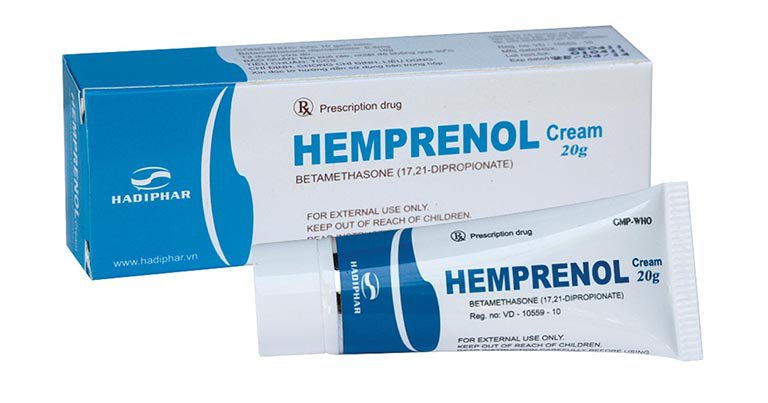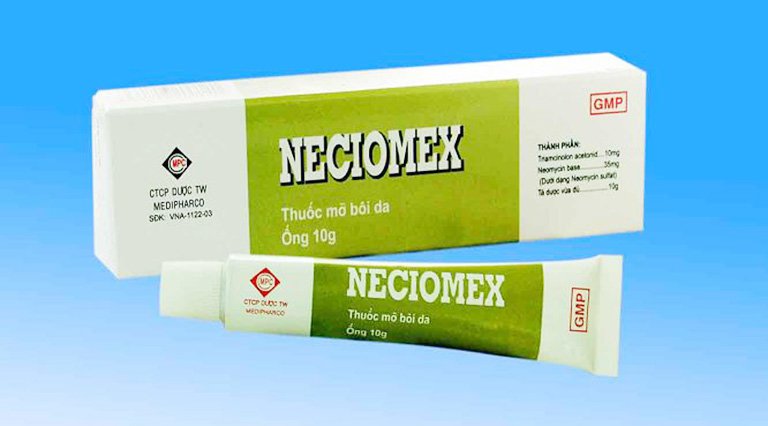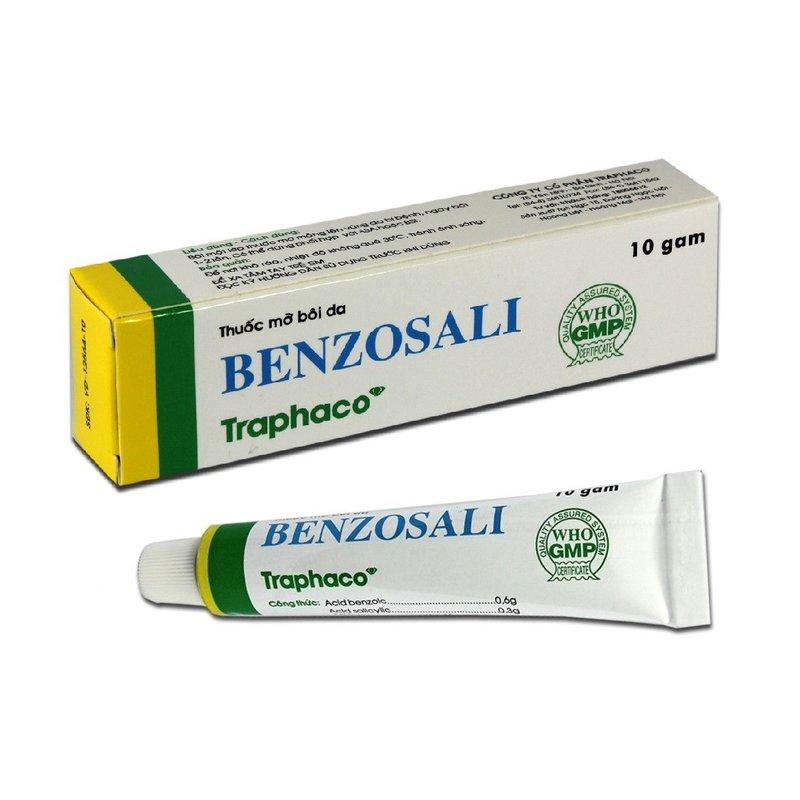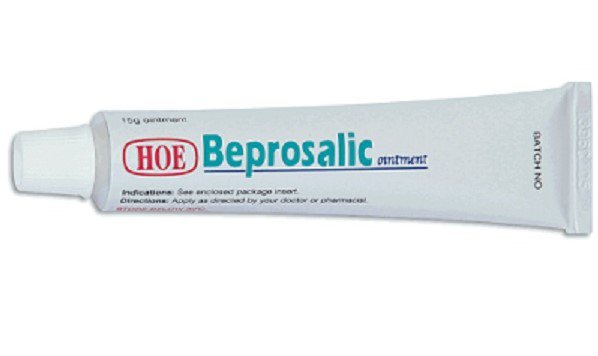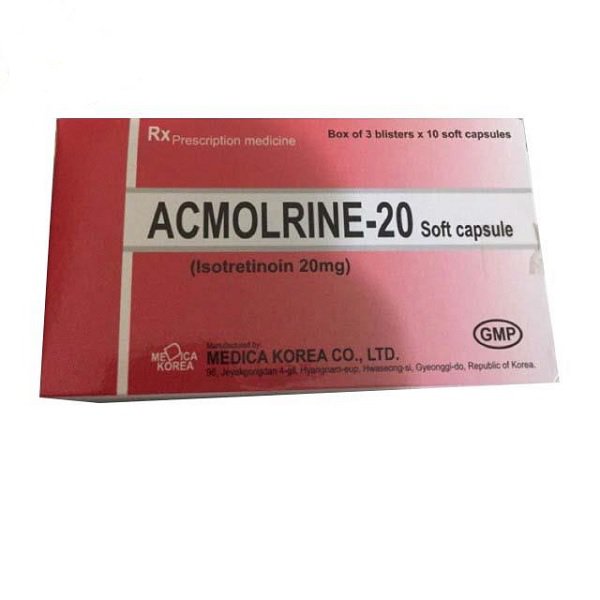Uses of Panthenol
This is an automatically translated article.
Panthenol is a drug used in dermatology, Panthenol is indicated for use in children to prevent diaper rash, prevent stretch marks in pregnant women or treat mild skin lesions. So to find out specifically what Panthenol is? how does it use? Let's find out the necessary information about the use of Panthenol through the article below.
1. What does Panthenol do?
1.1. What is panthenol? Panthenol is a provitamin B5, there are many forms of drugs with the main active ingredient being Panthenol such as:
Pantothenic acid:
+ Tablet form with content of 50 mg; 100 mg; 200 mg; 250 mg; 500 mg.
+ Slow-release tablets 500 mg, 1000 mg.
Calcium pantothenate:
+ Tablets content: 10 mg; 25 mg; 50 mg; 100 mg; 218 mg; 500 mg; 545 mg.
Dexpanthenol (an alcohol derivative of D-pantothenic acid):
+ Tablet form with content of 100 mg.
+ Syringe 250 mg/ml (2 ml each).
+ 2% topical cream.
+ Foam spray form.
+ Gel eye drops 5%.
+ Intravenous fluid form: In combination with other vitamins, electrolytes.
+ Skin cream form D-panthenol 5%.
1.2. What does Panthenol do? Panthenol is prescribed by doctors in the following cases depending on the form of the drug:
* Oral form:
Pantothenic acid deficiency.
Some cases of peripheral neuritis, leg cramps in pregnancy and alcoholism, burning leg syndrome, glossitis did not go away with treatment with other vitamins.
* Gel form:
Recurrent non-inflammatory corneal lesions in contact lens wearers.
Treatment of corneal damage caused by bacterial, fungal or viral infections.
* Cream form:
Skin damage: skin burns, sun burns, skin abrasions, slow healing skin grafts.
Prevention and treatment of dry, chapped or chapped skin
Dry skin
Breast care in lactating women and sore nipples, pregnancy stretch marks
Care and protection of children's skin Damaged by the moisture of the diaper, prevention and treatment of the skin when it is scratched, red rash.
* Injection form:
Prophylaxis immediately after major abdominal surgery to minimize the possibility of bowel paralysis. Loss of bowel tone causing bloating; Postoperative or postpartum retention of bloating, or postoperative delay in the restoration of bowel movements; intestinal paralysis.
* Aerosol form:
Indicated in the supportive treatment of skin and mucosal wounds, skin lesions such as: scratched skin, burns, sterile surgical wounds, fragments slow healing of grafts, sunburn, skin becomes less elastic, cracks and fissures appear, cystic and bullous skin diseases, epithelial defects, Herpes labialis Solaris infection.
Dexpanthenol, the active form of panthenol, is used to treat dermatological conditions to relieve itching or promote skin healing. The dermatological effects of topical application of dexpanthenol include fibroblast proliferation and accelerated re-epithelialization during wound healing. Furthermore, it acts as a topical protectant, moisturizer and has been shown to have anti-inflammatory properties.
Panthenol aids in the healing of a wide variety of skin lesions and is often used as part of combination therapies, skin repair, wound healing, inflammation and irritation. This effect may be attributed to D-panthenol's proven ability to stimulate the growth of important skin cells and restructure the inner skin matrix. D-panthenol also improves damage to the surface of the skin (found in dry, chapped skin) by supporting the regeneration and strengthening of the epidermis and stratum corneum thereby improving the natural protective barrier of the skin. skin. D-panthenol has also been shown to reduce irritation and inflammation as well as improve itching, skin erythema and other symptoms.
2. Usage of Panthenol
2.1 How to use Panthenol Oral:
Pantothenic acid and calcium pantothenate are taken orally.
Injection or infusion:
Dexpanthenol is usually given intramuscularly or by slow intravenous infusion and is also used topically as a cream or foam spray.
For slow intravenous infusion, dexpanthenol is reconstituted with a large amount of 5% dextrose infusion solution or ringer lactate solution.
Use eye drops:
Gel eye drops are used as eye drops.
Cream form:
Apply the medicine 1-2 times a day and gently massage to absorb the medicine.
Spray form:
Hold spray upright, valve head facing up. Shake the vial vigorously before each spray to obtain a good quality foam, especially when there is no treatment for a long time.
2.2 Dosage of Panthenol * Adults
10 mg of calcium pantothenate is equivalent to 9.2 mg of pantothenic acid.
Oral:
5 - 10 mg of pantothenic acid/day as a nutritional supplement for patients with normal gastrointestinal absorption.
Injection or infusion:
Treatment to increase intestinal motility: Intramuscular injection, starting dose of 250 mg - 500 mg of dexpanthenol, repeated after 2 hours, then every 4-12 hours as needed.
Slow intravenous infusion:
500 mg dexpanthenol. If abdominal distension or paralytic ileus does not improve rapidly, switch to other methods of treatment.
Topical Use:
When using Panthenol topically to treat itching and skin conditions, apply a cream containing 2% dexpanthenol to the affected area, 1 to 2 times a day, or more if needed.
+ Minor skin burns: after disinfecting the damaged area, apply a thick layer of medicine to the surface.
+ Prevent and treat sunburn: apply a thin layer of medicine to the damaged skin.
+ Treatment of cervical mucus deficiency: Apply one or more times a day according to the instructions of the doctor.
Use eye drops:
Put a drop of gel into the conjunctival sac 4 times a day and before going to bed.
* Children:
Treatment of increased intestinal motility (as prescribed by the doctor): 11 mg - 12.5 mg of dexpanthenol/kg body weight administered intramuscularly, repeated after 2 hours, then every 4 up to 12 hours take a dose as needed.
For infants: Apply a thin layer of Panthenol to the affected area of the buttocks after daily cleaning and after each diaper change.
* Other subjects:
Breastfeeding mothers need to use topical Panthenol: After breastfeeding, apply a thin layer of the drug to the damaged nipple and gently massage for the drug to absorb. Be sure to clean the area where the medicine was applied before feeding your baby again.
* Overdose
An overdose of panthenol causes conditions such as shortness of breath or fainting. Immediately call the nearest medical center for emergency care.
3. Contraindications of Panthenol
Patients who are allergic or have a history of allergy to any ingredient or excipients of Panthenol Aerosol form should not be sprayed into the eyes, nose, or throat.
4. Notes when using Panthenol
Panthenol should not be injected to treat mechanical intestinal obstruction. For paralytic ileus, it is necessary to pay attention to the supply of water and electrolytes, to prevent anemia, to reduce blood protein, to fight infections, and to avoid taking drugs that reduce intestinal motility. Patients with asthma or bronchopulmonary diseases: When taking Panthenol, patients with asthma or with bronchopulmonary diseases should not inhale propellants, as this can cause irritation of the mucous membranes, even may trigger an asthma attack. Panthenol prolongs bleeding time and should be used with caution in patients with hemophilia or at risk of bleeding. For areas exposed to light (such as the face and skin) or hairy areas, it is recommended to use Bepanthen Cream, which has a lighter formula and is absorbed more quickly. When Panthenol spray is applied to the anal and genital area at the same time as using a condom, the durability of the condom may be reduced due to the paraffin-containing medicine, thereby affecting the protective effect of the condom. Children must take the medicine under the guidance of a doctor. Avoid contact of non-gel eye drops with eyes.
5. Side effects of Panthenol
Common: Stinging, redness, irritation.
Rare:
+ Rash or rash, Quincke's edema.
+ Unusual changes in the skin, allergic reactions: rash, itching, swelling, dizziness, difficulty breathing.
6. How to store Panthenol?
For normal forms: store in a cool, dry place, avoid direct sunlight
Spray bottle: do not expose to sunlight and avoid temperatures higher than 50°C. Do not try to force open the jar or heat it up even after it has been used up. The nebulizer can only be discarded when it is completely emptied. Do not spray on flames or on red-hot objects. Keep away from flammable sources. No smoking.
Please dial HOTLINE for more information or register for an appointment HERE. Download MyVinmec app to make appointments faster and to manage your bookings easily.
This article is written for readers from Sài Gòn, Hà Nội, Hồ Chí Minh, Phú Quốc, Nha Trang, Hạ Long, Hải Phòng, Đà Nẵng.

